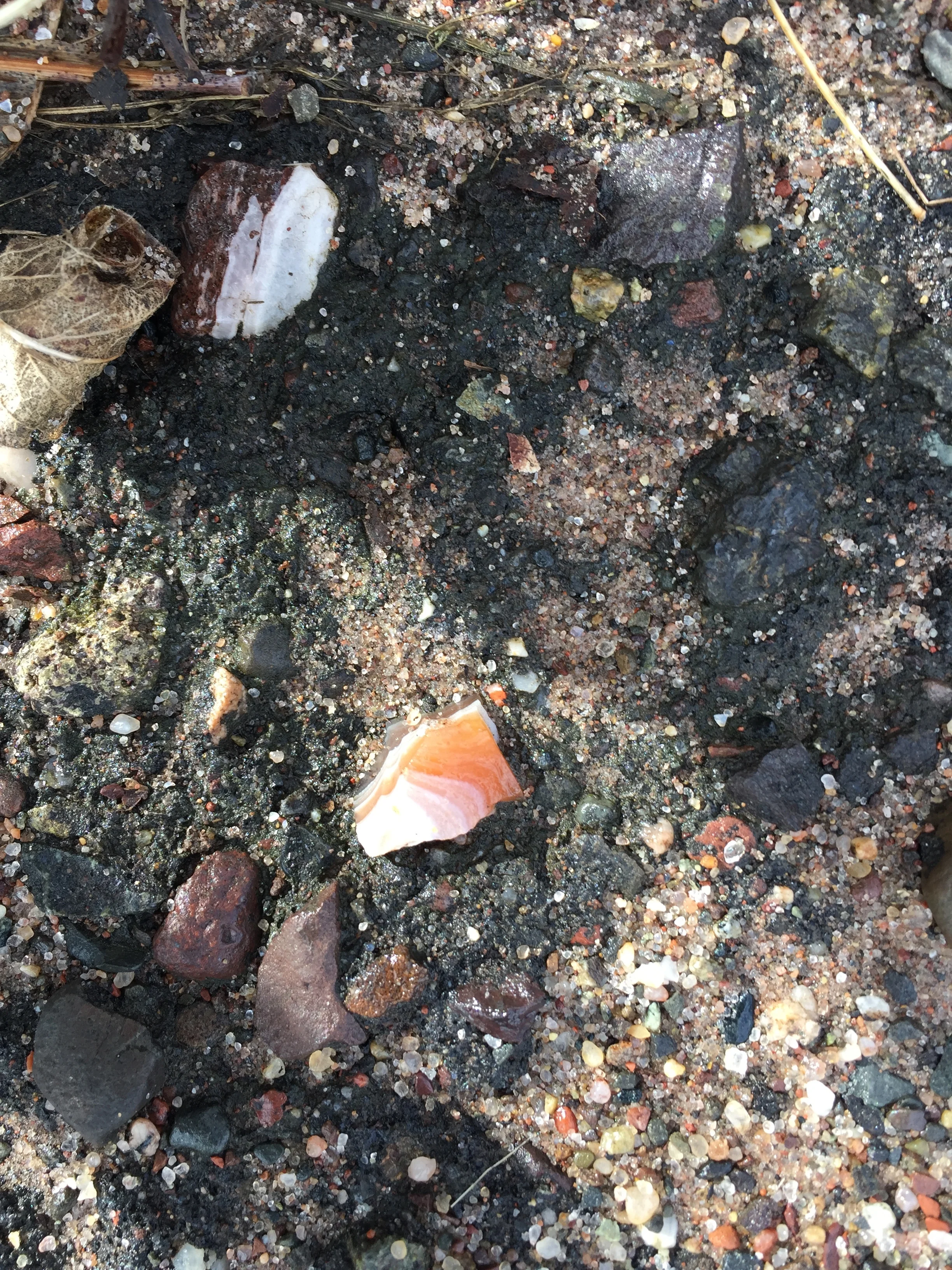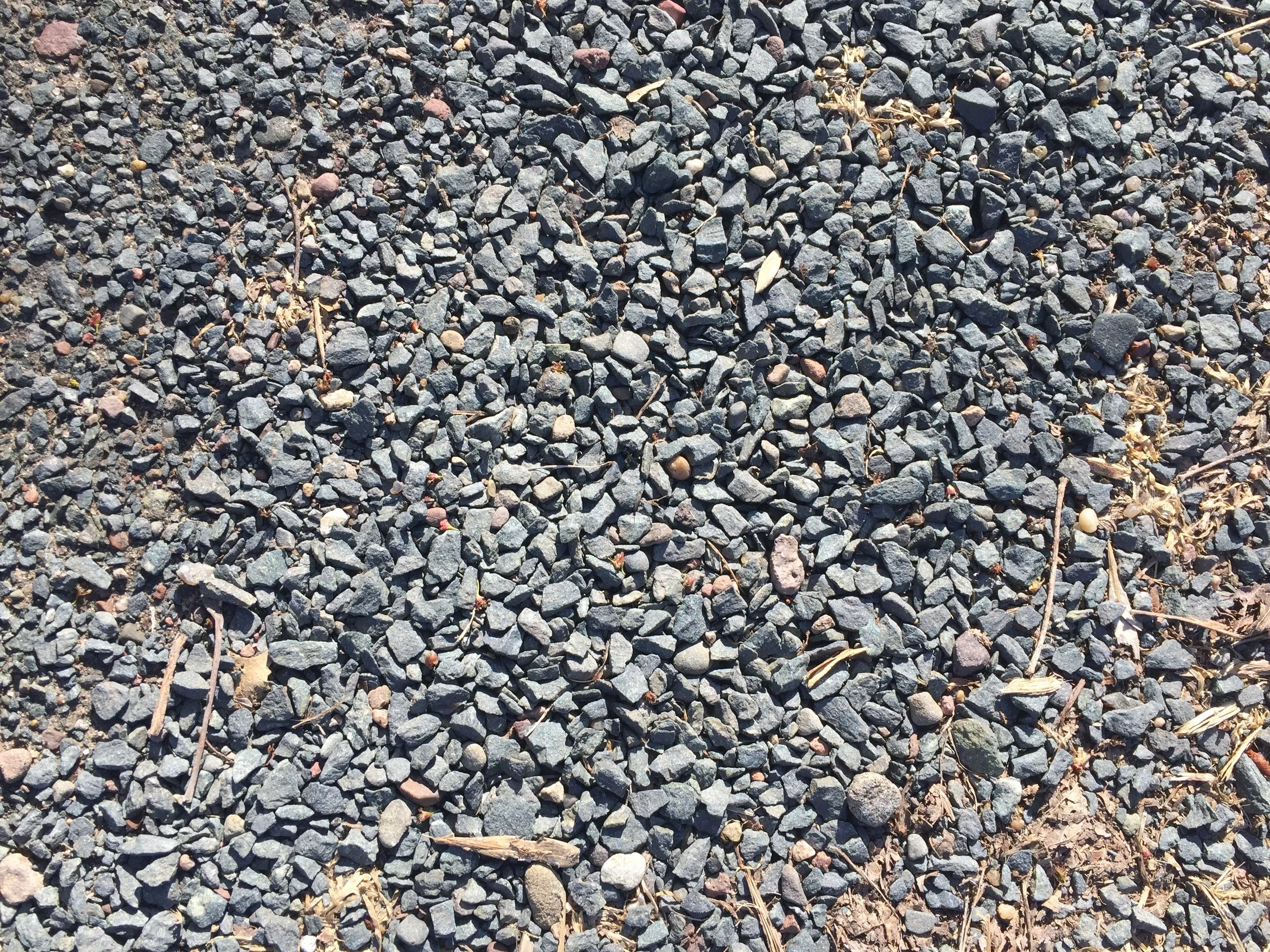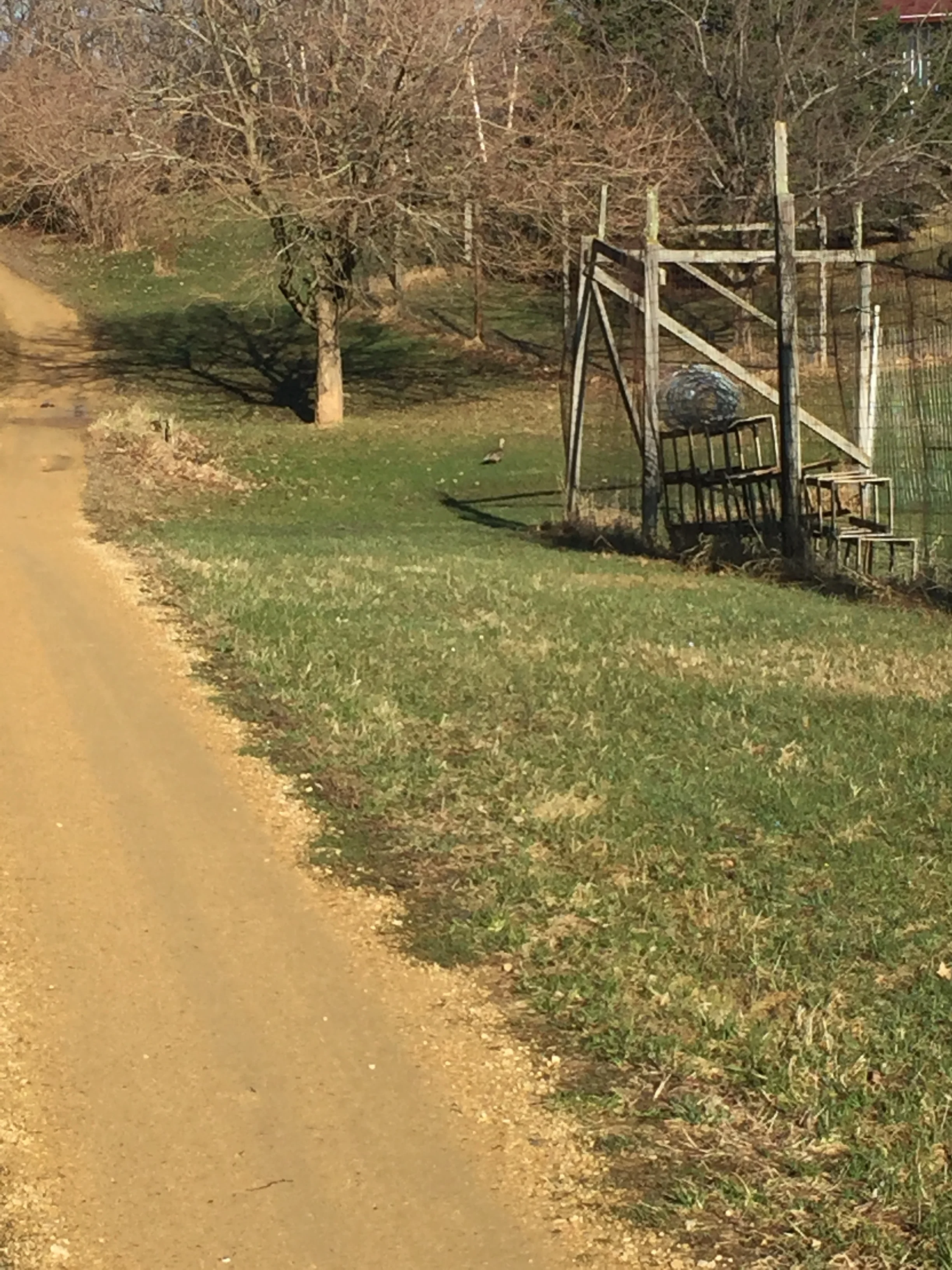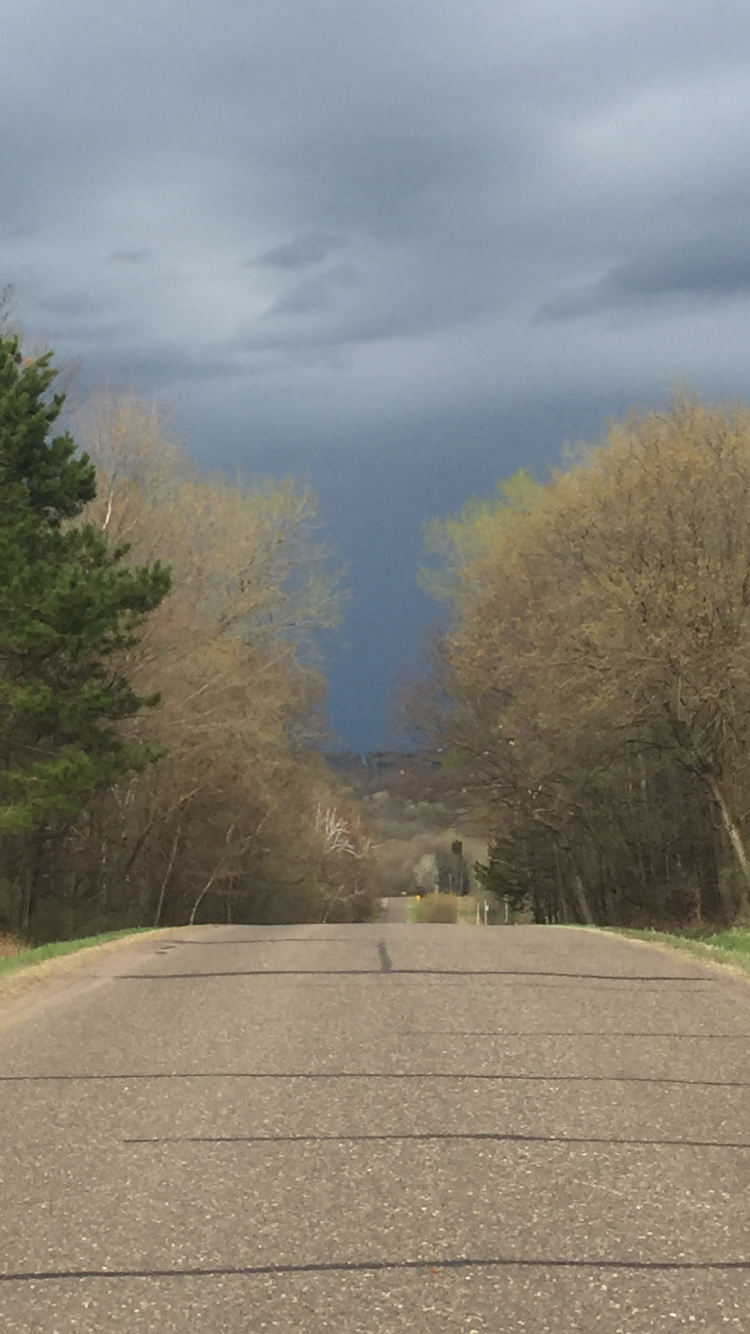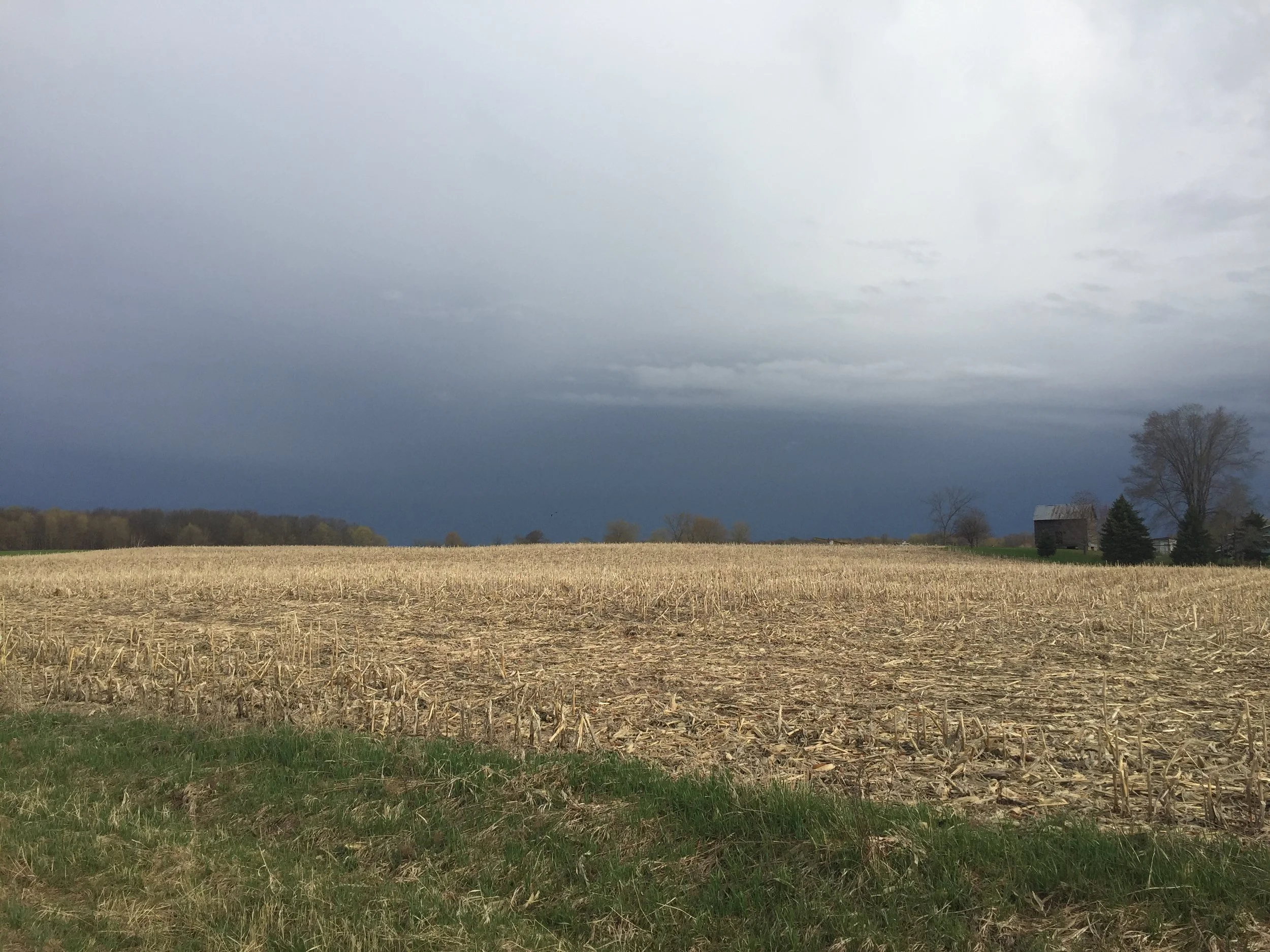Dog walk journal: my road is paved with agates!
While visiting with my mom and sisters, my older sister found some lovely stones and asked me if I knew what they were. Semi-translucent with coarse crystal equaled quartz in my opinion. Not agate? Nope.
Upon returning home, I started looking for examples of agates for her. While walking Zeke, this is what I found:
Agates are formed in layers, usually by minerals seeping in and filling holes (or vugs) in volcanic rock.
The composition of the mineral mix in the water that seeped into the vugs determines color.
Agates are a type of quartz, but with a microcrystalline structure.
The difference in crystal structure makes agates look glassy (left), while quartz looks duller and lumpier (right).
All the rocks I found were part of the gravel made to pave my road. Other local sources of paving media includes crushed basalt and limestone.
Basalt is a lava that cools quickly and has fine grains, making it pretty uniform. It doesn’t cool as quickly as obsidian, or volcanic glass. Around here, we can have layer upon layer of basalt flows, up to 20,000 feet thick. We live on what used to be a mid-ocean rift!
Our driveway was paved with limestone gravel. Limestone is all the shells from sea creatures that sink to the bottom and get squished into stone. (No extra charge for the wild duck in this photo.)
It seems that the faster melted rock cools, crystals don’t have as much time to form and so are smaller.
The agates in the pavement come from local gravel deposits, delivered thousands of years ago by glaciers that scooped them up from around where Lake Superior is now and dumped them as they melted. The St. Croix River used to drain Lake Superior, back when the Niagra Falls were blocked by other glaciers.
We have had several different glaciers run over this area, and they brought their own assortment of rocks. That is why, according to Michael, we have such beautiful and interesting pavement. Walking Zeke every day over one of the two mile treks might get boring. Now that I am learning about rocks, just looking under my feet keeps it new every day.
Walking west down to the river. The valley is so wide due to having glaciers fill up the river valley cut by prior mass drainage events, and having the river re-cut through the softer glacial till, as well as having the land rebound and then the river cut through the uplift. A mile of ice weighs a lot!
Walking east, where it is flat enough to farm all that good dirt delivered by those glaciers.
There is something comforting knowing that the earth that supports me has gone through cataclysmic changes, but is still here.
It will be here for the Grand Girl, even if it looks nothing like it does today.
